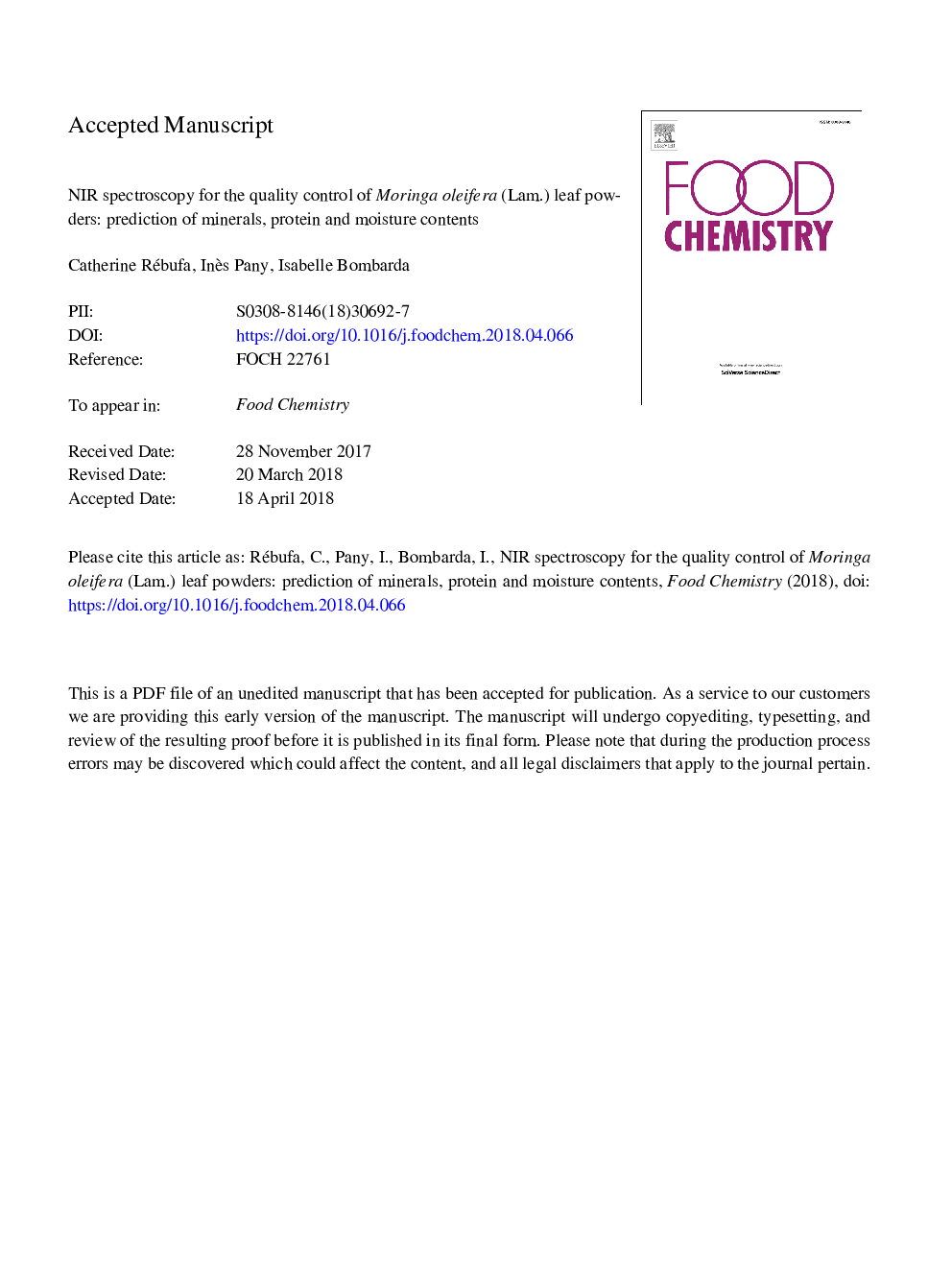| Article ID | Journal | Published Year | Pages | File Type |
|---|---|---|---|---|
| 7584943 | Food Chemistry | 2018 | 37 Pages |
Abstract
A rapid methodology was developed to simultaneously predict water content and activity values (aw) of Moringa oleifera leaf powders (MOLP) using near infrared (NIR) signatures and experimental sorption isotherms. NIR spectra of MOLP samples (nâ¯=â¯181) were recorded. A Partial Least Square Regression model (PLS2) was obtained with low standard errors of prediction (SEP of 1.8% and 0.07 for water content and aw respectively). Experimental sorption isotherms obtained at 20, 30 and 40â¯Â°C showed similar profiles. This result is particularly important to use MOLP in food industry. In fact, a temperature variation of the drying process will not affect their available water content (self-life). Nutrient contents based on protein and selected minerals (Ca, Fe, K) were also predicted from PLS1 models. Protein contents were well predicted (SEP of 2.3%). This methodology allowed for an improvement in MOLP safety, quality control and traceability.
Related Topics
Physical Sciences and Engineering
Chemistry
Analytical Chemistry
Authors
Catherine Rébufa, Inès Pany, Isabelle Bombarda,
